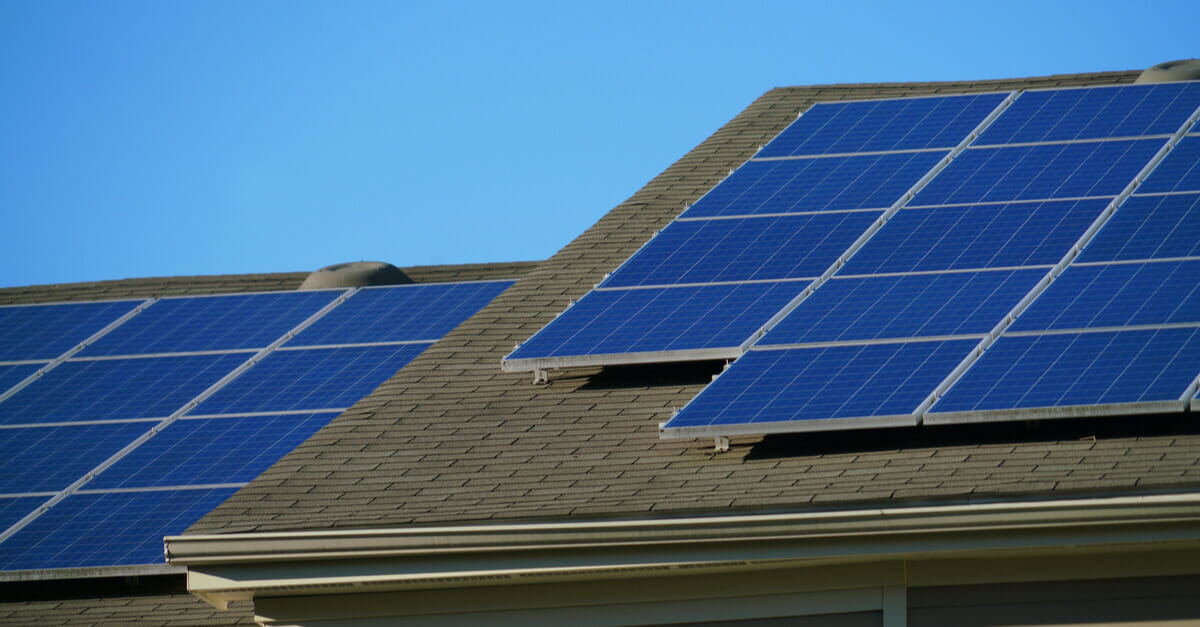Solar power is one of the fastest growing energy segments in the United States and since 2013 has been among the top contributors to U.S electrical capacity additions. There are about 1.5 million solar panels currently deployed in the 48 contiguous states with the average solar household containing an array of around 20 panels. With such a heavy political focus on renewable energy, it should come as no surprise that the frequency of a home inspector coming across a home using solar power will only be increasing with advances in technology creating more cost-effective solutions for the average household. Of course, not all geographic locations are created equal and depending on the territory where you perform inspections, solar power may be a common sight, or a rarity. Whether you see solar installed on nearly every home you inspect or hardly ever, what are your obligations and what steps should be taken to ensure you are returning the best report to your client and what opportunities does this present?
Many home inspectors when asked about solar panels may default to, “Solar panels are out of the scope of a standard residential home inspection.” While this is technically correct, there are several factors to look at when a home has an array installed that are critical to providing a thorough report to your client. It would also be beneficial to educate yourself on the different types of panels and their specific applications. We won’t go into detail on this topic here, but knowing the differences between electrical solar panels (for general power consumption), pool solar panels (used for heating pool water) and panels designed to supplement the home water heater will help give you more credibility when speaking with agents or clients. Two of the major systems in the home that are impacted by the installation of the photovoltaic panels are the roof/attic and the electrical system.
Solar panels are sometimes mounted on stand-alone, angled platforms at ground level, but more commonly (and relevant to our conversation) you will see them in residential areas mounted directly to the roof of a structure. Any system mounted directly to the roof deck has the potential to create a situation where water can penetrate through to the attic or interior of the home. Paying close attention to the mounting brackets and penetration points is particularly important to ensure a good, weatherproof seal. Birds in particular find that solar panels create an attractive environment shielded from the elements and will often make themselves right at home under the panels. Nesting material and bird waste can fill up gutters and create quite the mess, not to mention health concerns if their waste isn’t properly eliminated. Nesting material washed off the roof into drainage systems can accumulate, clog and result in costly repairs. So what steps should be taken to make sure your providing the information necessary for clients when solar panels are involved?
As with any out-of-scope system, you should take good, clear photographs of the solar panels and make sure the language in your inspection report clearly outlines that solar panels are outside the scope of a residential home inspection and recommend they have the system independently evaluated by a qualified professional. Next you’ll want to evaluate, to the best of your ability, the penetration and attachment points for appropriate sealant and any signs of damage to the roof deck. Make a mental note to also check for signs of water penetration on the interior of the roof when you are evaluating the attic. The operation and functionality of the panels is out-of-scope, however, subsequent damage caused from improper installation will certainly be of interest to any home inspector and client. Any defects resulting from water penetration, birds or other pests should certainly be included in your report. With most solar systems being tied to the home’s electrical system, this is also another critical area in the report to specifically address. Again, this is an out-of-scope system, but there are some basic elements that can be addressed to give your client the information they need to move forward with their transaction. Evaluating the electrical panel you may find a splice feeding power back to the grid. One simple step that can be taken is to become familiar with this type of panel configuration which will help you become more knowledgeable and credible when speaking with your client(s) and fielding direct questions.
Safety is another huge factor any inspector should be aware of. There are unique risks associated with inspecting homes with solar power. The most obvious of which can also be the easiest to overlook. If you are able to walk the roof for evaluation—it can be very easy to catch your foot on the low profile of the panels. It is critical to maintain a high degree of situational awareness and avoid all tripping hazards. That is an easy way to end your inspection early and cause damage to the home, the solar array and most importantly—yourself. Always exercise extreme caution when on the roof of a structure and pay particular attention when evaluating a roof with solar panels.
Solar also offers a unique opportunity to increase your potential income by taking the appropriate continuing education courses to be able to offer solar panel inspections. Many clients and real estate professionals will appreciate the fact that their inspector has the necessary credentials to evaluate this system without the hassle of scheduling a separate provider. With the increasing prevalence of this solar energy, it would benefit most inspectors to become more familiar with the technology and the associated defects most commonly encountered.
In summary, solar energy is quickly growing across the country and home inspectors should be familiar with the deployment of the technology and the common defects associated with this implementation. Pay particular attention to the roof system, attachment points, potential water intrusion and electrical connections to make sure that you are providing the best inspection possible within the boundaries of your scope of work. Remember the safety concerns and take the necessary precautions to avoid injury to yourself and your surroundings. Finally, take a look at what opportunities the increase in this technology can provide for you and your service offerings.





